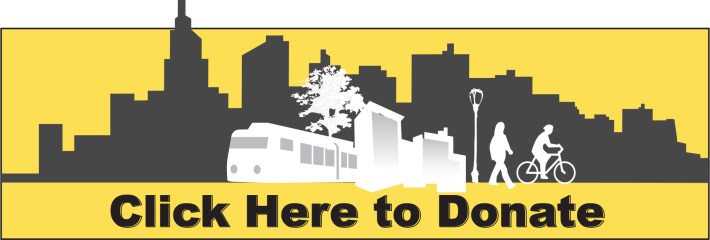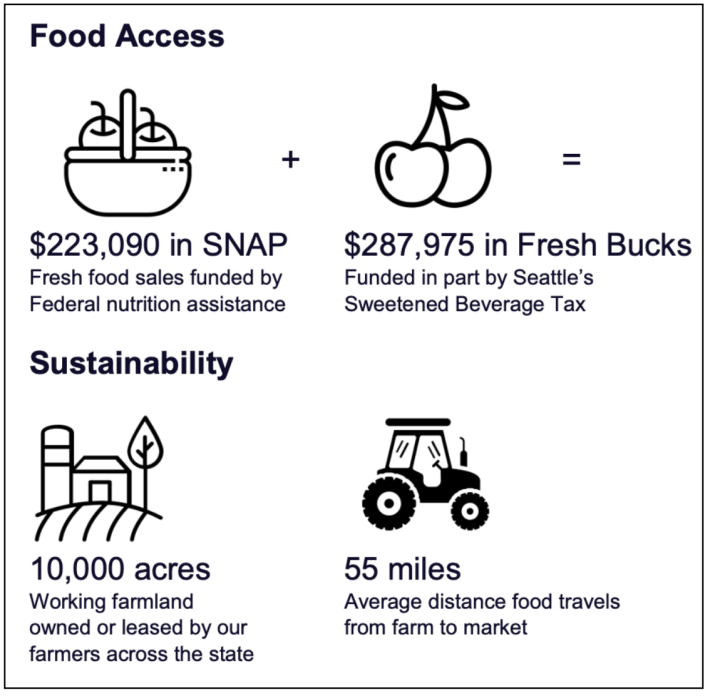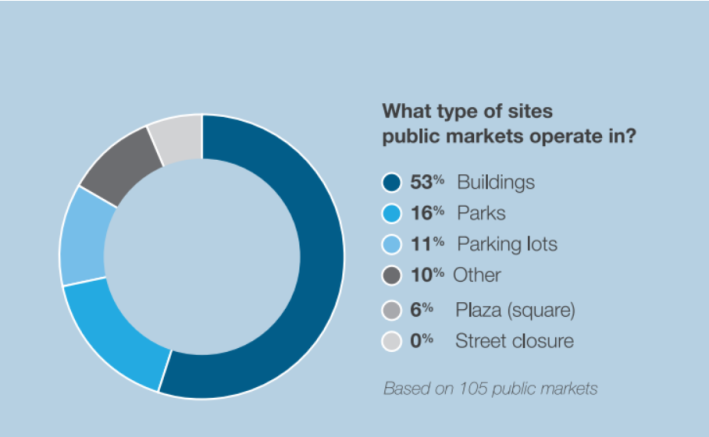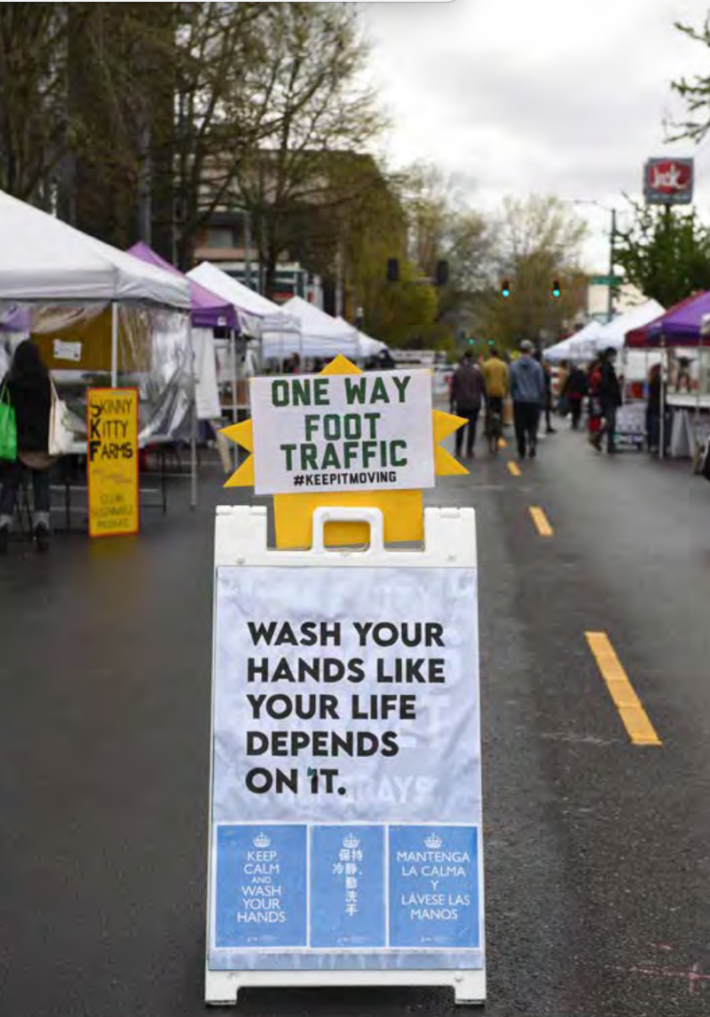
The street market is a powerful and ancient idea that's overdue for a big U.S. comeback, a new report argues — and during a COVID-19 holiday season, there's no better time to get the SUVs out of the road and start setting up the vendor stalls.
Though many Americans associate them with exclusively spendy produce and artisan soaps, the outdoor market has long been used not just to sell products and services of all kinds, but to reduce economic, nutritional, and other key disparities between underserved communities and wealthy, predominantly White ones. But without a robust understanding of their benefits and strong support from local government, markets are vulnerable to being swept aside in favor of other uses that local leaders think are more productive, like vehicle movement — and they also risk becoming concentrated in rich areas where poor residents are less likely to be able to enjoy them without access to a car.
That's part of what motivated the team at Project for Public Spaces to undertake the Market Cities Initiative, which explored the nitty-gritty of how 60 cities around the world have cultivated their streets-to-retail programs — and sometimes, translated them into indoor, year-round bazaars. The effort culminated in a deep-dive into three North American cities — Pittsburgh, Seattle and Toronto — but the idea came out of a conference in Barcelona, which is home to some of the longest-running and most heavily Instagrammed markets in Europe, as well as a slate of outdoor holiday markets that have run since at least 1786.
"That trip made us think: what if cities approached markets not as individual entities, but as a cohesive network, and did so in a way that allowed [leaders] to play a role in addressing equity?" said Kelly Verel, co-executive director of programs for the organization. "Markets can be part of the solution for a lot of major societal issues, but without a strategic approach and strategic local policies, not to mention real investment and management, they don't do nearly as much as they could."

When it comes to solving our transportation challenges, outdoor markets often punch far above their weight class. The researchers found that the farmer's markets in Seattle alone not only created an enormous number of safe, pedestrian-only spaces, but actually shrunk the farm-to-table distance to just 55 miles, compared to the average 1,500 mile journey taken by each produce item in the average American grocery store. Those distances can stretch even longer for value-added products that are processed at factories far from where their constituent ingredients are grown or synthesized — and since roughly 71 percent of U.S. food is transported by freight truck, most of the burden of those journeys falls on U.S. roadways. (Non-edible goods, of course, often make a similar highway trek, albeit usually after they've flown or floated over an ocean first; local market goods, by contrast, are usually transported in smaller-format vans or cars.)
Localizing as much of our retail system as possible is a crucial first step to slimming down the 40 percent of U.S. transportation emissions that are gobbled up by the shipping sector alone. But most small, local businesses simply can't afford to open up full-scale storefronts straight off the bat – especially in the context of auto-dominated cities that have prioritized big-box strip malls surrounded by massive parking lots, and eschewed the kind of rent-by-the-day retail stalls that any upstart can afford.

"Especially for BIPOC and young people, markets are a relatively low-risk, low-investment opportunity for people to start small businesses," Verel said. "[Some people] have the perception that markets are by and for white women who want to go out on Saturday morning and buy some flowers. But that's not exactly true — because they're providing direct marketing opportunities and access to entrepreneurship for all kinds of under-resourced communities."
Though markets have the unique potential to make cities more equitable with just a few tents and tables, actually using them as a tool to uplift BIPOC communities takes care.
The researchers found that while all of their pilot cities had a respectable number of markets overall, they weren't always distributed equitably across the region — and the vendor base wasn't always representative of the diversity of the area on the whole. Toronto's markets were slightly more concentrated in wealthy oases that already had access to good grocery and retail; meanwhile, only about 25 percent of the vendors in Seattle's markets identified as immigrants or people of color, which is about 10 percent shy of the local minority population overall.
When COVID-19 struck, equitable market access for vendors and shoppers only got more difficult. In the early days of the lockdown, market organizers in Pittsburgh successfully pushed back against a city proposal that would have limited vendors to offering drive-thru services only, excluding buyers without access to private vehicles and vendors with smaller inventories that aren't well-suited to bulk pick-ups, like craft vendors. The former group, in particular, is disproportionately made up of Black, Indigenous, other people of color, as well as low-income people receiving SNAP benefits.
Stories like that illustrate how badly cities need to invest in centralized leadership that works hard to keep markets resilient, flexible, and accessible to all — and not just during a pandemic.
"What we found consistently as we did this study was that a lot of these markets always need the kind of assistance [many of them] got from their cities during COVID," Verel said. "They need to have the ability to pick up the phone and call the DOT and say, I have more vendors than I thought, and I need more space; can you extend our street closure permit? Those that were able to make that call easily prior to COVID are definitely more successful at adapting [during the pandemic]."
Verel is hopeful that the coronavirus effect has accelerated public officials' understanding of the need not to just foster market cities, but to do so in ways that are are deliberate, equitable, and flexible to the needs of the communities they serve. But what she didn't anticipate is how deeply COVID-19 would expose another inherent value of the market city: as spaces of social refuge in dark times.
"When very little felt safe, markets created these physically distant spaces that were havens for human interaction," Verel says. "In New York City, where I live, it was one of the only places where you felt like you could be in community again. Even with masks, even six feet apart, you could be tactile...It made us feel like we hadn’t lost everything."
That's a far better use for a strip of publicly owned pavement than any driving lane.







